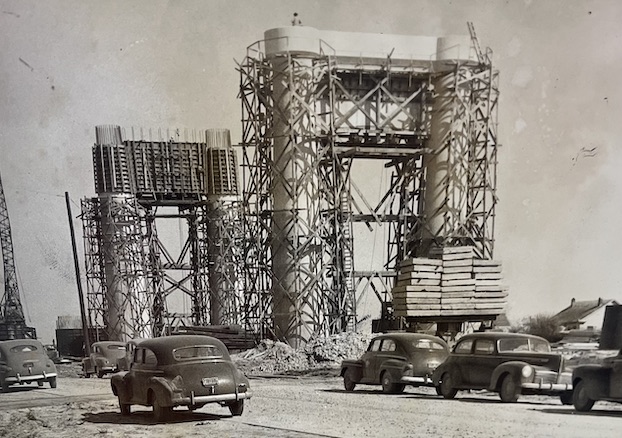La. Senate leader says state needs to spend for I-10 bridge
Published 10:21 am Saturday, May 20, 2023

- A boy runs along a lakefront walkway Thursday in front of the 70-year-old I-10 Calcasieu River Bridge. It was announced Thursday that the U.S. Dept. of Transportation is awarding $150M in Mega Grant funding for a new bridge to be built. (Donna Price / American Press)
Louisiana Senate President Page Cortez gave his upper chamber colleagues a 30-minute explanation Thursday about why it’s wise to raise the state’s spending cap. Speeding up construction of a new Interstate 10 bridge at Lake Charles without citizens having to pay a toll is one of the major projects he mentioned.
Three other mega projects are a new I-10 bridge at Baton Rouge, upgrades to U.S. 90 to interstate standards from Lafayette to New Orleans, and upgrades to I-49 North where I-49 is not yet upgraded.
Cortez, R-Lafayette, in a different statement directed to Sen. Mark Abraham, R-Lake Charles, said, “In Lake Charles, your bridge project is a glaring and hazardous liability that causes terrible traffic backups that risk the lives of drivers and needs to be addressed.”
Trending
In a separate message to Southwest Louisiana citizens, Cortez said, “Nobody has been working harder for the bridge in Lake Charles than Republican Sens. Mike Reese of Leesville, Abraham, Jeremy Stine of Lake Charles and before them, former Sen. Ronnie Johns.
“These gentlemen have fought tooth and nail to keep it from being a toll project and now, here is the opportunity to do so if they could just get support for raising the expenditure limit from their House members,”
Cortez is sponsoring a Senate Concurrent Resolution 3 that would raise the state spending limit so current surpluses could be used for a number of one-time projects. The one-time cash surplus over the next two years totals $2.2 billion.
The House has already sent a state budget to the Senate that opposes raising the expenditure limit. It would use the surplus that can be spent to primarily pay off retirement debt.
Cortez explained, once again, why the Legislature in 1990 created a spending limit. The state was facing a one-half billion dollar deficit at the time and had no rainy day fund. It had to raise taxes to fix the problem and something had to be done to keep that from happening again.
“We live in a different environment today,” Cortez said. Surplus funds are available and they can accomplish many essential projects, particularly in the construction of roads and bridges, he said.
Trending
The expenditure limit has been raised only twice since 1990, he said. The first time was in 2007 following the record devastation that occurred in the New Orleans area caused by Hurricane Katrina. It was raised again in 2008.
Cortez rattled off numerous state projects that were accomplished with those surplus funds during those two years.
“Today, we know where those funds will be spent,” Cortez said. The Senate president said he is putting an amendment together that will list the projects that can be funded.
As one example, he said grants could be made to homeowners in order for them to fortify their roofs. “Fortified roofs,” he said, “are the No. 1 driver for reducing insurance rates.”
Additional funds will help strengthen both the Rainy Day Fund and the state’s Budget Stabilization Fund, he said. However, he continued to stress the many road and bridge projects that could be funded, which he said is what happened in 2007 and 2008 when the expenditure limit was increased because of surpluses.
In reference to the House plan to pay off retirement debt, Cortez said, “While the retirement debt is a liability, there is a plan to pay it down, and no one is in danger if they follow that pay down plan.”
Cortez said the Senate will come up with two budgets to be submitted to the House. One will apparently be along the lines of the House plan and the other a Senate plan with projects funded with surpluses after the expenditure limit is raised.
Conservative Sens. Mack “Bodi” White, R-Baton Rouge, and chairman of the Senate Finance Committee, and Bret Allain, R-Franklin, and chairman of the Revenue and Fiscal Affairs Committee, will be working on those budgets.





